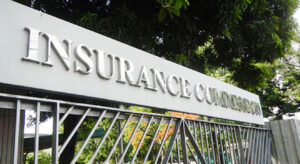THE profitability of property and casualty (P&C) insurers in the Philippines could weaken this year despite strong topline growth, S&P Global Ratings said, citing inflation pressures and higher costs.
Eileen Tay, an analyst with S&P Global Ratings, said in an e-mail to BusinessWorld: “We consider the higher claims (stemming from continued high inflation) and expenses (higher reinsurance costs and capacity challenges) to impact overall profitability.”
“The insurers’ ability to pass through higher reinsurance rates to consumers could be constrained amid strong market competition,” she said.
Inflation in the Philippines has been declining since peaking at 8.7% in January. A BusinessWorld poll of 17 analysts last week returned a median estimate of 4.9% for July inflation, settling at the upper end of the central bank’s 4.1-4.9% forecast for the month.
If realized, inflation would have likely slowed from the 5.4% reading in June and the 6.4% logged in July 2022.
The central bank has said inflation could ease further in the next few months and be within the 2-4% target band by the fourth quarter. It sees inflation averaging 5.4% for the year and 2.9% for 2024, before picking up to 3.2% in 2025.
According to Ms. Tay, the rising frequency of natural catastrophes could impact P&C insurers.
“Particularly, in the face of hardening reinsurance prices and more selective risk appetite by reinsurers, the margin compression for insurers could intensify. Concurrently, global macro headwinds could also impact the insurers’ growth momentum,” she said.
The Insurance Commission (IC) reported that net premiums written by nonlife insurance companies rose 0.09% to P15.88 billion in the first quarter.
Total premiums earned rose 15.68% to P15.99 billion, while gross premiums written rose 14.68% to P26.17 billion. The segment’s net income rose 137.32% to P2.63 billion at the end of March.
Robust economic growth may support the insurance industry this year, as the Philippine economy is expected to expand 5.9% in both 2023 and 2024, she said.
“We see the government’s ongoing efforts to address infrastructure gaps and improvements in the business climate, through regulatory and tax reforms, should support growth in economic productivity,” Ms. Tay said.
“Particularly, we view that the insurance sector will benefit from the government’s continued focus on infrastructure development and the public-private partnerships to narrow the catastrophe protection gap,” she said.
The government is planning to spend the equivalent of 5-6% of gross domestic product (GDP) on infrastructure until 2028.
“This will contribute positively to revenue growth for the property and casualty insurers in the longer term, particularly property and engineering lines,” Ms. Tay said.
She expects more demand for fire and engineering insurance coverage alongside more infrastructure projects. The market for workers’ compensation insurance may also grow.
“However, as with most infrastructure projects, such projects are time-intensive and dependent on execution. The immediate contribution to insurance premiums for the insurers could take time,” she said. — Keisha B. Ta-asan

